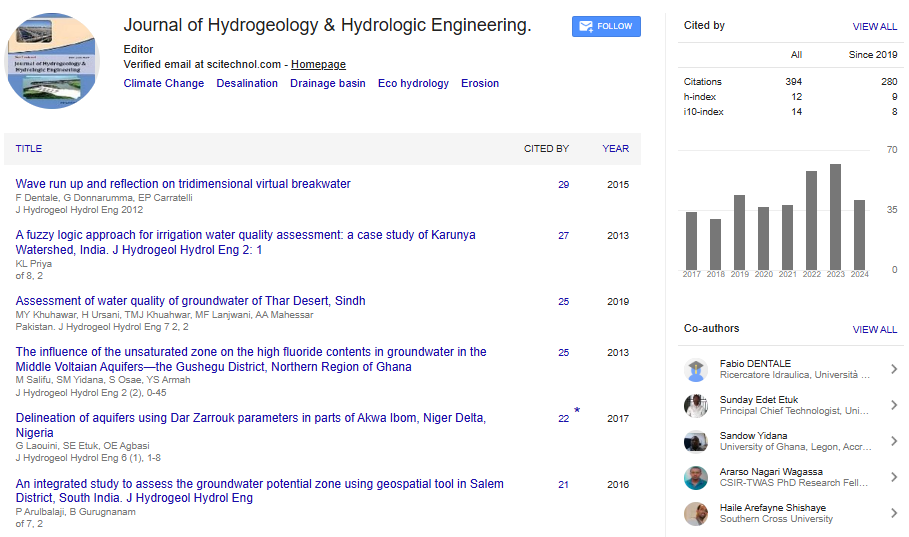Research Article, J Hydrogeol Hydrol Eng Vol: 5 Issue: 4
Hydrogeochemical Analysis and Evaluation of the Groundwater in the Haramaya Well Field,Eastern Hararghe Zone, Ethiopia
| Haile A Shishaye1* and Ararso Nagari2 | |
| 1School of Natural Resource and Environmental Engineering, Haramaya University, P. O. Box 278, Dire Dawa, Ethiopia | |
| 2General Laboratory, Haramaya University, P. O. Box 138, Dire Dawa, Ethiopia | |
| Corresponding author : Haile A Shishaye School of Natural Resource and Environmental Engineering, Haramaya University, P. O. Box 278, Dire Dawa, Ethiopia Tel: +251942124463 E-mail: haile.4.hiwot@gmail.com |
|
| Received: August 16, 2016 Accepted: September 06, 2016 Published: September 13, 2016 | |
| Citation: Shishaye HA, Nagari A (2016) Hydrogeochemical Analysis and Evaluation of the Groundwater in the Haramaya Well Field, Eastern Hararghe Zone, Ethiopia. J Hydrogeol Hydrol Eng 5:4. doi: 10.4172/2325-9647.1000146 |
Abstract
Knowledge of the origin and hydrogeochemical composition of groundwater is very important for the sustainable development of groundwater resources in the present state of art. It is imperative to regularly monitor the quality of groundwater and develop means to protect it. Accordingly, this study was aimed to conduct a hydrogeochemical analysis and evaluation of the groundwater in the Lake Haramaya well field. The water samples taken from the well field were analyzed for six physicochemical parameters (temperature, conductivity, TDS, total hardness, pH, and turbidity), major cations and anions, minor anions and trace metals using standard procedures, and the results were compared with the national and international standards. The analysis conducted using the GW-Chart software has also shown that the origin of the well water in the study area is shallow fresh groundwater with a major geochemical composition of calcium carbonate, which was found to be in line with the previously developed geological and hydrogeological maps of the site. According to the laboratory results, the levels of calcium ion in most of the samples were found to be very high. Moreover, the calcium ion concentrations in most of the wells, especially in the wells nearby the limestone outcropping area, were found to be by far beyond the maximum contaminant standards. Therefore, these facts can assure that the origin of the groundwater in the study area is shallow and calcium carbonate rich aquifer. Consequently, the groundwater in the area was evaluated as hard water.
 Spanish
Spanish  Chinese
Chinese  Russian
Russian  German
German  French
French  Japanese
Japanese  Portuguese
Portuguese  Hindi
Hindi 
